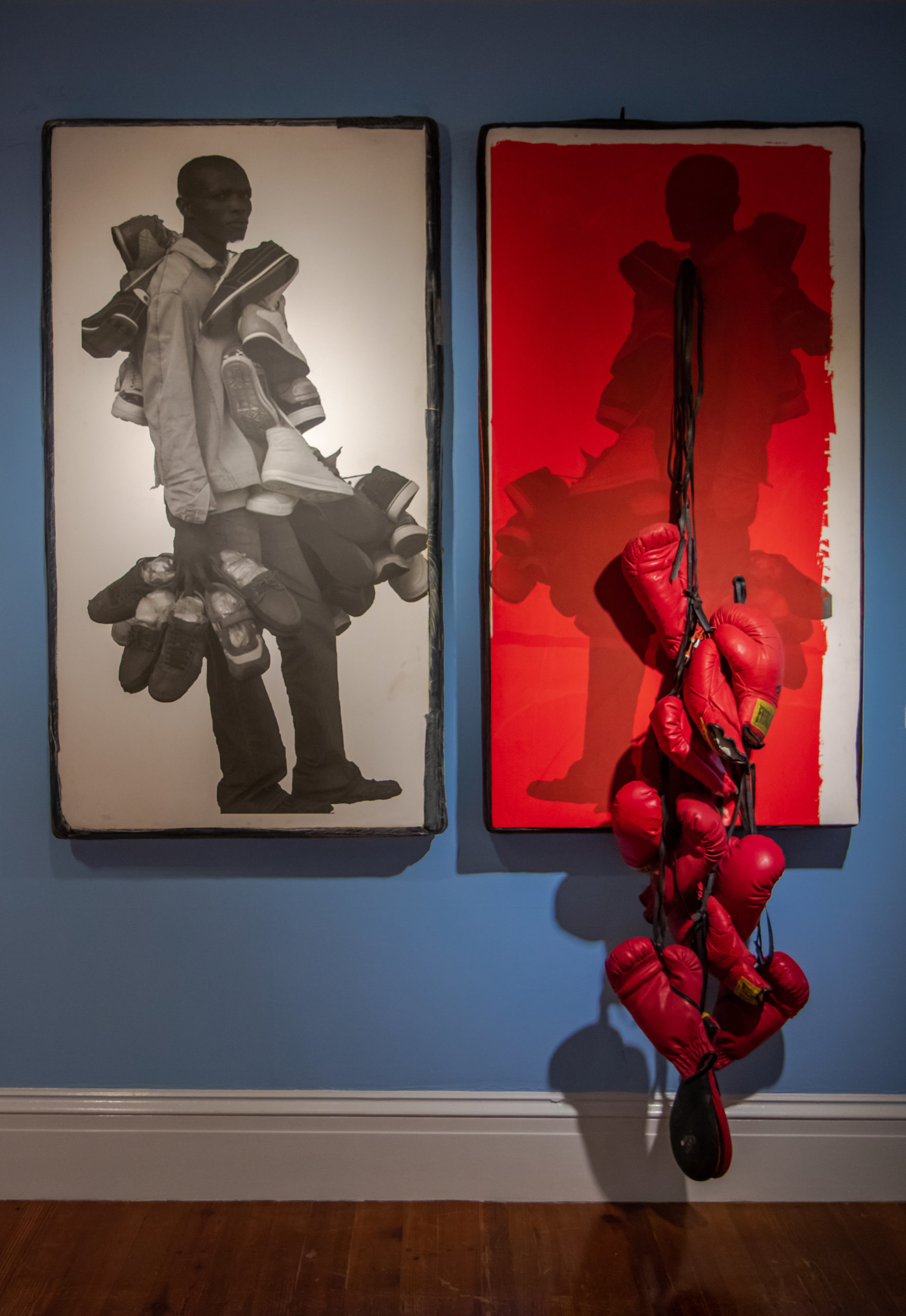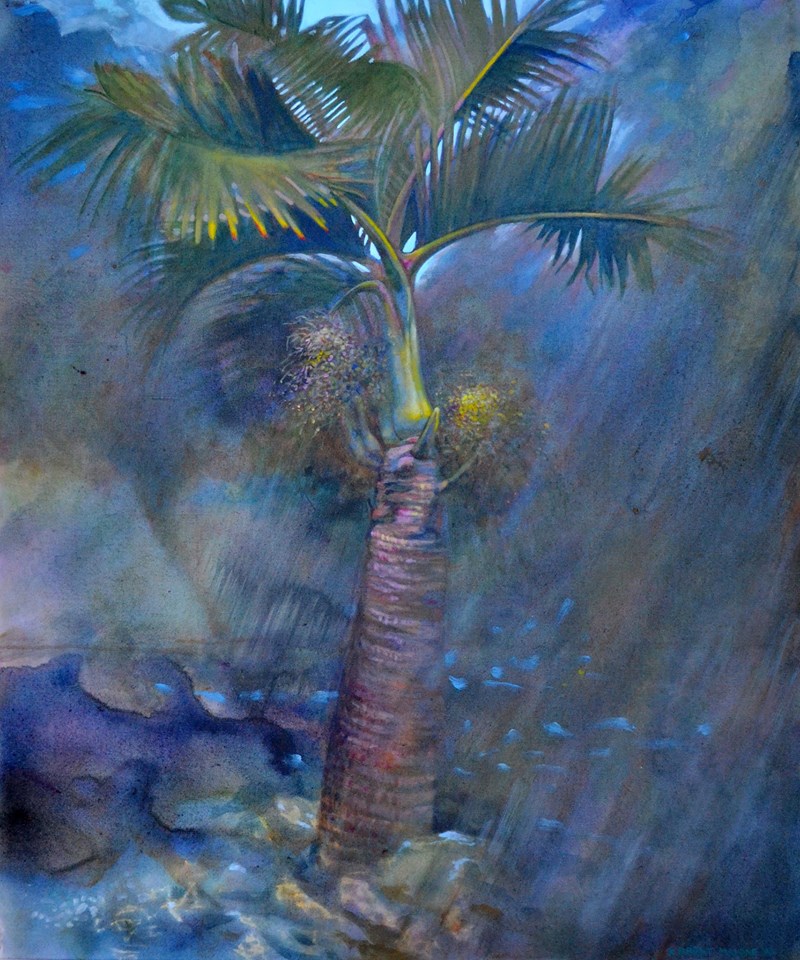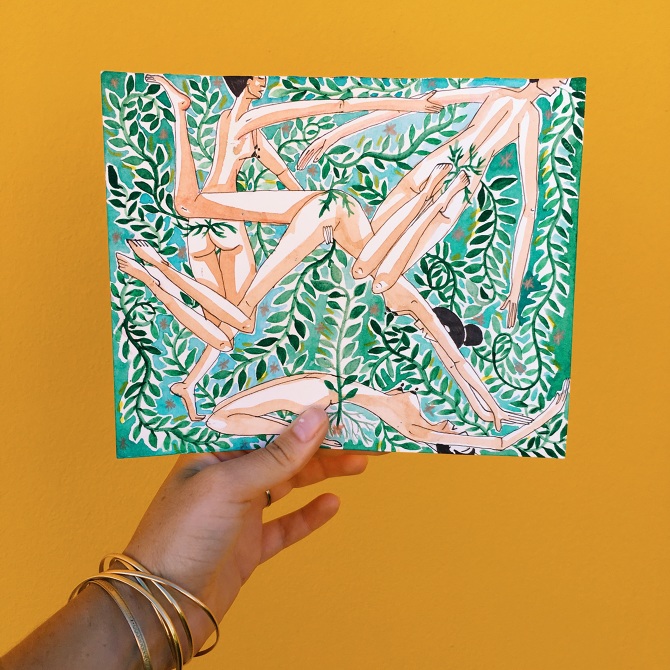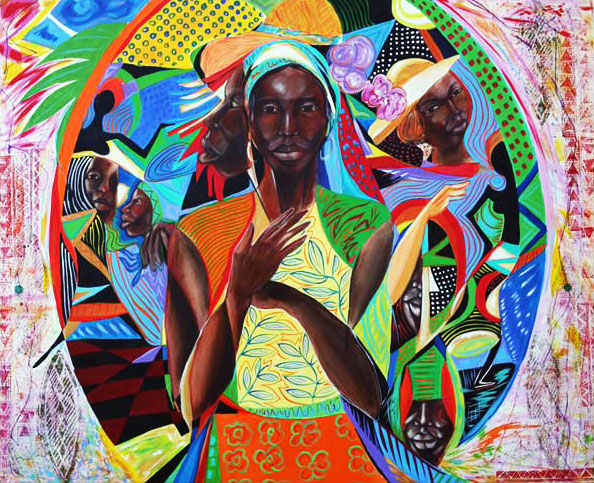“Duran Duran”: Exploring Themes of Longevity and Survival in Kendra Frorup’s Work
Blake Fox · 2

Richardo Barrett, the curator of the new re-hang of the NAGB’s Permanent Exhibition (PE), TimeLines: 1950-2007, has worked in the Bahamian visual arts community for over six years. In a speech at the opening of the new show, he noted the broad range of materials that he has encountered—including art made from sturdy ceramic, over to ephemeral seeds. Barrett further expressed his interest in—and the importance of—the survival of these materials for years to come. The conversation surrounding materials–the impermanent and the enduring–has been crucial in the curation of the recent rehanging of the Permanent Exhibition. The museum is having to ask and answer difficult questions around how we conserve works to ensure that they survive–especially in our tropical, humid climate–for generations to come.
The permanent exhibition is organised into three sections: Real Time, Time Flies, and It’s High Time. The It’s High Time section of the exhibition focuses on contemporary Bahamian artwork with a particular exploration of the way materials change over time. Barrett asks, are Bahamian artists ensuring that their work will last in years to come? It is a part of our culture, after all, and the conservation of artworks is a crucial tenet of museums.

As one would predict, some materials will outlive others. For example, Kendra Frorup’s installation Duran Duran (2011), which was purchased by the NAGB in 2012 is comprised of sturdy materials. Although not a part of the National Collection, Blue Curry’s Untitled tire (2010) covered in black and white beans warrants mentioning because it’s displayed opposite Frorup’s work and the beans will likely break down faster, given the fact that they are organic. Perhaps not all artists want their work to last for a very long time, and this ephemeral nature is considered a part of the work, as we observe the materials as they degrade over time. But is this the intent? Or should better practices be employed to ensure the survival of said materials? If not the intent, artists must then seriously consider the implications of using certain materials as some materials will degrade over time. If artworks are to be maintained for posterity, issues of conservation need to be assessed before acquiring work to become a part of the National Collection.
Frorup’s hefty installation is made up of two thick, rubber-like panels that resemble a boxing ring. The convoluted black banding creates a rugged and battered border around the panels, further evoking the theme of boxing or fighting. On the left panel stands a black-and-white print of a man donned by an impressive collection of shoes–held in his hands and draped over his shoulders. Stylish sneakers, loafers, and even high-top Converse comprise the image. Some pairs are matching, others seem individual. And the shoes are in good shape. It’s almost as if he is walking around selling them. Replace the shoes with bags of guineps and it might not be far off from something you would see while driving the streets of Nassau. His facial expression is neutral, he’s calm and composed. It’s in direct contrast to the panel adjacent to it: the same image of the man, but with a large block of red ink saturating most of the panel.
Red often connotes anger, desire, strength, and determination. The man now becomes a silhouette and his cloak of shoes appear as armor. A grouping of tattered red Everlast boxing gloves, attached to the panel, seem to flow out of it and they almost touch the floor. They appear heavy and as if they have been used. Repeatedly. Further, the Everlast logo fits in perfectly with the themes of violence and suffering, but also survival and even accomplishment at the end of the road. The repetition of the two-dimensional image of the shoes could conceivably represent a continuous journey–through life or through other circumstances, and the three-dimensional, sculptural gloves could also represent a repeated fight.
Frorup herself said, “repetition in my work implies that repeated effort may be necessary to accomplish things and that the accomplishment is worth the struggle.” And as an artist who is proud of her strong worth and work ethic–something she attributes to her Bahamian culture–Frorup reminds us of the importance of resilience in Duran Duran. Yet, despite the tough appearance of Kendra’s work, the leather gloves will also wear over time, and likely at a dissimilar rate to the rubber panels. This poses additional questions of conservation. Should the gloves be maintained as they are or should they be allowed to naturally wear? These issues demand thoughtful consideration on the part of both the artist and the museum.
Another important consideration for museums is the lack of representation. Artists of color, women artists and queer artists continue to be underrepresented in the art world–in both professional and artistic capacities. According to a 2017 Artnet news article, 80% of artists represented in galleries in NYC are white and 70% are male. While these statistics don’t necessarily translate the same for The Bahamas, male artists and non-queer artists are still dominant. There have been strides, no doubt, to make art spaces more diverse–NAGB included–but there is still more work to do if we are to make art spaces a true representation of the diverse identities and cultures present in The Bahamas.
Artists of colour, women artists, and queer artists continue to be underrepresented in the art world–in both professional and artistic capacities. Museums like the NAGB must also continue to fight to make our spaces inclusive. Kendra remarks, “every viewer brings his or her own background and experiences to the show,” and this is ultimately why it’s crucial to preserve artworks like those in TimeLines: 1950-2007.
TimeLines: 1950-2007, is on view through June 2020 and supports the work of 43 Bahamian artists.


